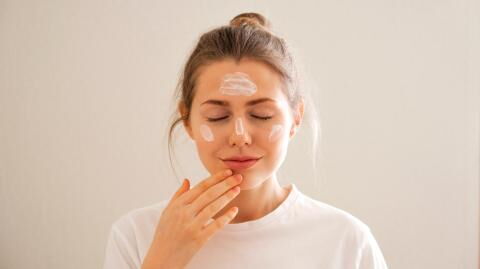There is no such thing as consumption without impact. Everything we buy, eat, wear and use come at the cost of labour, supplies and the environment, and skincare is no exception.
Discover our latest podcast
According to Zero Waste Week, over 120 billion units of packaging are produced every year by the cosmetics industry, many of which are plastic or glass and can take hundreds of years to decompose if not recycled. But packing isn’t the only problem. When it comes to our skincare routines, water usage, transport, ingredient farming methods and animal products all play a part in sustainability.
With the global warming crisis getting worse each year, it’s no surprise you’d want to do your part by creating a more sustainable skincare routine. But, reaching out for those ‘clean’, ‘green’ and ‘free-from products won’t always do the good you think they will.
Instead, here’s what you should look out for when making your skincare routine more sustainable:
1. Before you make a purchase ask if you really need it
The first and possibly most difficult way to make your skincare routine more sustainable is to simply buy less. Skincare can become addictive, and we all want to try the new trending ingredients and brands, but ask yourself: ‘Do I really need that fourth bottle of serum?’. If not, maybe refrain from buying it or wait until you do need it.
2. Aim for recyclable or low-waste packaging
Opting for recyclable, low-waste, or zero-waste packaging is another good way to lower your environmental skincare footprint.
Some stores like Khiels and Boots even have their own beauty recycling initiative where you can bring in traditionally non-recyclable beauty packaging in exchange for Boots Advantage Card points.
Even better, look for brands like Bolt Beauty and Humankind that offer refills for their products or let you use your own containers so you can ensure the packaging has a long life.
3. Go for vegan and cruelty-free products
Cultivating a sustainable skincare routine can’t be done at the expense of animal life. Often, animal products and by-products are also farmed using unsustainable methods.
Instead, look for vegan and cruelty-free products to ensure no animals were harmed in the making of your skincare. If you’re unsure about what makes a skincare product truly cruelty-free, check out our guide here.
4. Natural isn’t always better
Some brands may boast that their skincare products are all-natural or organic, and while this may sound like a great thing, some ingredients are better made in a lab.
Some essential oils and skincare ingredients can often have a negative impact on the environment when farmed. This can be due to water requirements and land use. For example, making just one pound of lavender essential oil requires around 250 pounds of lavender; that’s a lot. Instead, using a synthetic version takes the strain off the environment. Better yet, many synthetic ingredients are derived from or identical to their organic counterparts.
5. Ditch the cotton pads and makeup wipes
When it comes to using toner or makeup remover, we often reach for cotton pads and wipes. But these items can stack up in the trash over time. Instead, invest in an oil or balm cleanser to help melt off your makeup. When it comes to toners, try reusable cotton pads or even using your bare hands!
6. Conserve water
When you wash your face, it’s a general rule that your cleanser should be on the skin for no less than one minute. If you leave the tap running during that time or wash your face in the shower, then you could be wasting water.
And, while washing your face in the shower may feel convenient, it not only wastes water but the hot temperatures can dry and irritate the skin.
To make your skincare routine more sustainable, always wash your face at the sink and turn the tap off while cleansing.
7. Buy multi-tasking products over single-ingredient skincare
When it comes to our skincare concerns we can often go a little overboard on products to target them, creating a pile of packaging and waste. Instead of using single-ingredient skincare, try opting for serums and moisturisers packed with multiple ingredients that can help you achieve your skin dreams.
8. Go for larger volume bottles
While it may seem more convenient to buy travel-sized skincare products, you often run out quicker and need to buy more. This leads to more packaging waste and can even contribute to greenhouse gases through shipping.
If you have a go-to cleanser or moisturiser that you’re guaranteed to use every day, go for the biggest bottle or tub you can. This will not only cut down on packaging and transport emissions in the long run, but often buying in bulk means more value for money.
9. Don’t waste your products
The last tip we have to make your skincare routine more sustainable is to finish the products you open and use what you have. If you find that a moisturiser has been breaking you out or a scrub is too harsh, use them on your body instead of throwing them away. Otherwise, give them to a friend who doesn’t mind sharing!
With all this information in hand you’ll be sure to have a sustainable skincare routine in no time!















